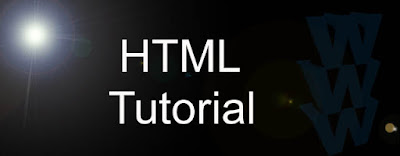Punctuation
|
HTML Entity(case sensitive)
|
ISO Latin-1 code
|
name or meaning
|
–
|
–
|
–
|
en dash
|
—
|
—
|
—
|
em dash
|
¡
|
¡
|
¡
|
inverted exclamation
|
¿
|
¿
|
¿
|
inverted question mark
|
"
|
"
|
"
|
quotation mark
|
“
|
“
|
“
|
left double curly quote
|
”
|
”
|
”
|
right double curly quote
|
'
|
'
|
apostrophe (single quote)
| |
‘
|
‘
|
‘
|
left single curly quote
|
’
|
’
|
’
|
right single curly quote
|
«
» |
Thursday 11 February 2016
HTML: Special Characters
 A programmer and Founder of Girfa
IT Services, working from 2009.At Starting computer teaching was my full-time job but after 10 years of teaching I chose to programming as a full-time job and teaching become part-time. In real life, I am very lazy and I made it my coding style I always try to make a reusable component that’s my USP for programming which saves my time and extra working both.
A programmer and Founder of Girfa
IT Services, working from 2009.At Starting computer teaching was my full-time job but after 10 years of teaching I chose to programming as a full-time job and teaching become part-time. In real life, I am very lazy and I made it my coding style I always try to make a reusable component that’s my USP for programming which saves my time and extra working both.
Wednesday 10 February 2016
Java Script Then and Now
 A programmer and Founder of Girfa
IT Services, working from 2009.At Starting computer teaching was my full-time job but after 10 years of teaching I chose to programming as a full-time job and teaching become part-time. In real life, I am very lazy and I made it my coding style I always try to make a reusable component that’s my USP for programming which saves my time and extra working both.
A programmer and Founder of Girfa
IT Services, working from 2009.At Starting computer teaching was my full-time job but after 10 years of teaching I chose to programming as a full-time job and teaching become part-time. In real life, I am very lazy and I made it my coding style I always try to make a reusable component that’s my USP for programming which saves my time and extra working both.
HTML VS CSS
 A programmer and Founder of Girfa
IT Services, working from 2009.At Starting computer teaching was my full-time job but after 10 years of teaching I chose to programming as a full-time job and teaching become part-time. In real life, I am very lazy and I made it my coding style I always try to make a reusable component that’s my USP for programming which saves my time and extra working both.
A programmer and Founder of Girfa
IT Services, working from 2009.At Starting computer teaching was my full-time job but after 10 years of teaching I chose to programming as a full-time job and teaching become part-time. In real life, I am very lazy and I made it my coding style I always try to make a reusable component that’s my USP for programming which saves my time and extra working both.
Tuesday 9 February 2016
HTML Tutorial
What Is HTML?
HTML is a markup language, not a programming language. In
fact, the term HTML is an acronym that stands
for Hypertext Markup Language. You can apply
this markup language to your pages to display text, images, sound and movie
files, and almost any other type of electronic information. You use the
language to format documents and link them together, regardless of the type of
computer with which the file was originally created.
HTML is written as plain text that any Web browser or word
processing software can read. The software does this by identifying specific
elements of a document (such as heading, body, and footer), and then defining
the way those elements should behave. These elements, called tags, are created by the World
Wide Web Consortium (W3C).
simple HTML page
<html>
<head>
<title>My Second Web Page</title>
</head>
<body>
Place Your Code Here
</body>
</html>
Paragraphs
In
HTML, a paragraph is created whenever you insert text between the <p> tags
<p>This is my first XHTML page.</p>
Headings
HTML
enables you to add six different heading tags to your pages by using the tags <h1><h6>. These tags are very simple to
use.
<h1>This
is Heading 1</h1>
 A programmer and Founder of Girfa
IT Services, working from 2009.At Starting computer teaching was my full-time job but after 10 years of teaching I chose to programming as a full-time job and teaching become part-time. In real life, I am very lazy and I made it my coding style I always try to make a reusable component that’s my USP for programming which saves my time and extra working both.
A programmer and Founder of Girfa
IT Services, working from 2009.At Starting computer teaching was my full-time job but after 10 years of teaching I chose to programming as a full-time job and teaching become part-time. In real life, I am very lazy and I made it my coding style I always try to make a reusable component that’s my USP for programming which saves my time and extra working both.
Subscribe to:
Posts (Atom)


